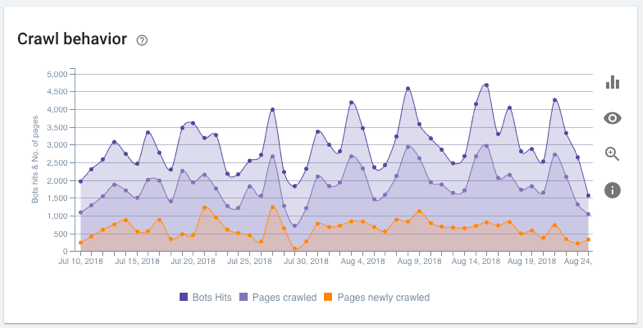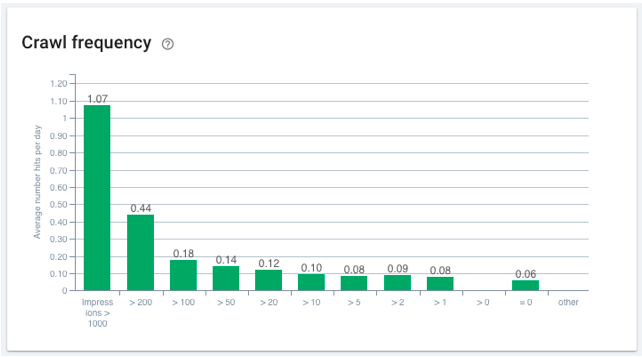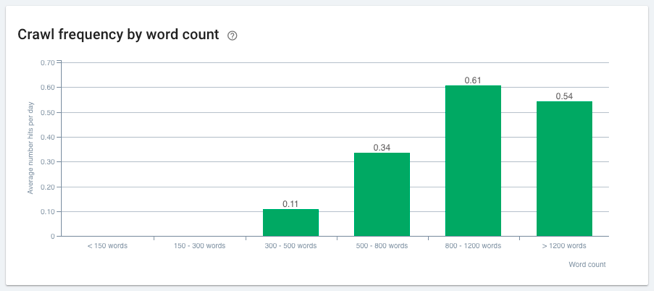
DLG Senior Digital Media Manager Marc Rudisuhli discusses how luxury executives can leverage their performances using digital.
By reading this article, you will know exactly what should be prioritized in order to get digital results.
More specifically you will learn:
- What the best sources of traffic & sales are (overall)
- Where luxury companies lose millions in advertising every year
- How to assess if your digital team is at the top of the game (or if you should consider a change)
- The four pillars you need to use to reach 100% of your digital potential
Increase Your Digital Visibility (the Right Way)
A CEO’s main mission is to drive a company to success.
Success comes from creating great products and letting the world know about them.
Increasing awareness and increasing visibility can be pretty easy, when done the right way.
In this article, we suggest a simple (yet very effective) process to increase your products' visibility (and increase your company's success).
Place Your Boutique on Fifth Avenue
When it comes to marketing, the three most important criteria are location, location, location.
It makes sense...
If your boutique is on the main street, you will gain more visibility, have more visitors and sell more. In digital, the main streets are called Google, Yandex, Baidu and Naver. Visitors navigating through search engines usually represent the biggest, and the best, source of visits.
In the luxury industry, it’s common to see search engines bringing in more than 50% of visits.

Image courtesy: World Watch Report Benchmark 2018.
Since visits from search engines represent your biggest source of visits, even tiny improvements could have a major impact on sales.
Feed the Stallions, Starve the Ponies
To achieve digital success, the formula I’ve used for 15 years is always the same: "Feed the stallions, starve the ponies."
In other words, leverage on what is working. If Search Engine represents your biggest source of visits and leads, leverage on Search Engine.
My tip: Keep a budget to test other sources, but make sure you invest the biggest part of your advertising budget on it.
Budgets Ignore Reality
Far too often CEOs neglect the importance of visits coming from search engines. It is common to see budgets spent on offline advertising that are way above budgets invested online.
In some cases, millions are spent on magazines, while only few hundred thousand are invested online.
And the nonsense doesn’t stop here...
Even online, I often see companies investing four times more in Display* and PPC* than in Search Engine Optimization. In other words, that means companies spend four times more budgeting for a source which is driving three times less revenue.
What is the logic behind it?
Yes, PPC can do things SEO can't. I agree. Yes, display or even offline advertising (what I like to call "the old advertising way") should bring some results. Well... I hope.
Personally I'm a data-driven decision-making person. If I invest $1 in advertising, I want to be able to measure the Return On Investment (ROI).
Let's take a concrete example. Let's take a company that we’ll call "Anonymous Luxury International Ltd." Their name is hidden for privacy reasons, but the numbers are real.
Every year, this company spends $1.5 million in PPC & Display. With $1.5 million, this source generates 39% of all visits and 1,800 leads. At the same time, this company spends $0.4 million in Search Engine Optimization (SEO), with $0.4 million SEO generating 61% of all visits and 6,000 leads.
Personally, if I was the CMO of this company, I would have trouble justifying why I spend four times more budget on a source which generates three times less leads.
Don't assume this case is unique.
Every day I develop digital strategies for international luxury companies and every day I see the same nonsense: This "old advertising way" costs luxury companies millions every year.
My tip: Test different sources of revenue, but focus on what is working best.
(Hmmm… this is very similar to my previous tip, isn't it? Why? Because I'm a data-driven decision-making person and I hope you are too!)
Ignorance Can Be Costly
Before reading the rest of this article, I need you to know your numbers. How many visits and leads do you get from which source? What is your biggest source of traffic? It is search engine, right? And what is your biggest source of revenue? It is search engine, right?
Well those are rhetorical questions as without even knowing your company, I know the answer. It is my job.
So bear with me here...
Now that you understand the REAL importance of visits coming from search engine, your first question should be "how can I increase it?"
To increase traffic from search engines, the best way is to apply Search Engine Optimization (SEO).
Interested in improving your brand’s Search strategy?
A quick note:
Except for pure digital players, most people (including CEOs) do not understand SEO. I don't blame them... I've explained SEO a hundred times to my family and friends, but the question keeps coming back: "Can you explain to me again, what are you doing exactly?" When you are not a CEO, you can ignore this, but if you are in charge of driving a company to success you can't afford the luxury of ignoring it. Too often CEOs don't understand the real value of traffic coming from search engine. Especially in the luxury industry, CEOs tend to believe in physical visits to boutiques only. But for an SEO expert it is like saying: "Sorry, cash only is accepted... Credit cards are digital... we accept real money only!"
Yes, digital visits are real and yes, digital visits bring customers.
SEO is pretty simple, in fact.
To be successful with SEO, you need to understand how search engines like Google, Baidu, Naver, Yandex, etc. work.
First, you need to know that search engines are not intelligent (even Google Rank Brain based on Artificial Intelligence is just following simple rules).
Search engines follow rules written by mathematicians to decide what the best answers to your questions are.
So when you search for "What is the best luxury watch?" search engines will apply a series of rules based on criteria to provide you with the best answers.
If you understand search engine rules and criteria, you can adapt your website accordingly and get more visits and more sales.
I will develop those rules and criteria now.
Old Way vs. New Way of Doing SEO
As of today, most SEO agencies are focusing on optimizing websites and creating fresh and unique content. This is what I call the "Old Way of Doing SEO." It is true that this strategy brings additional visits to websites, which already have a good reputation, but it’s providing partial results only.
To get 100% of your digital potential, it is required to complete the old way with four top ranking factors:
Links
Content
Engagement
Server logs
Each of the above ranking factors deserves an entire dedicated article, but I will save your time as you might not be a SEO geek (like me).
What you need to know is that to get 100% of your digital potential, you need to make sure your Digital Agency is focusing on the following:
1. Links
- Links are the number of times another website is sending a link to your website.
- One link coming from a quality website can beat 1,000 links coming from low quality websites.
- Links have to be natural with a good balance of highly trusted websites.
2. Content
- In 2013, the Huffington Post was already publishing 2,000 articles per day.
- In 2015, Wordpress blogs were publishing more than 2,000,000 post per day.
- Due to the quantity of articles published every day, creating expert quality content is not enough.
- To be seen, to attract visits from search engines, content has to be written in a specific way.
- It has to be created to attract links and use variety and contextual richness to demonstrate expertise to users and search engines.
3. Engagement
- Today, engagement is crucial.
- Engagement is a sign of usefulness and search engine algorithm loves it.
- All metrics such as Click Trough Rate (CTR), bounce rate, time spent on page, social interaction, should be monitored closely and improved over time.
4. Server logs
- Server logs are completely undervalued.
- Server logs is the key to success for any companies which are serious about driving results.
- Most SEO agencies overlook this aspect claiming to focus on "fixing the basic" first.
- Server logs are the basics.
- Server logs are the quickest and best way to get decide quick wins and demonstrate results using SEO technics.
That is why I will develop it further.
My tip: If your digital agency is not currently doing the above four points, consider a change.
Customer Journey vs. Server Logs
Supermarkets spend millions in understanding what makes us spend more. Fresh produce is usually the first thing you see as vivid colors put you in a good mood (good mood = more spending).
Then freshly baked bread or roasting chickens reinforce how fresh the produce is and make you feel hungry (hungry = more spending). Music with a slow rhythm tends to make you move slower, meaning you spend more time in the store (spend more time = spend more money).
Products usually bought together are grouped (like beers and chips, buying extra products = spending more). Expensive products are usually at eye level, while cheaper product are below or above. Supermarkets analyzed our behaviors and adapted to make us spend more.
Guess what? We can do the same with Search Engines.
With server logs we know where search engines went, what pages they are looking at and how many times they come back to a page.
If you had a supermarket, knowing what you know now, would you place your products randomly? Certainly not. That being said, as a general introduction, to index a website, search engines like Google are visiting webpages multiple times per day.
When search engines visits your website, the information is recorded in server logs. A page with low importance will be rarely visited. An important page will be visited multiple times per day. The more a page is visited, the more chances it has to rank in Search Engine Result Pages (SERP) and ultimately visits.
The sum of all Google visits represents the total crawl budget allocated to a website by Google. The more a website is optimized, the more crawl budget it gest. Thanks to logs we can measure the total crawl budget.
Here is a graphical representation of this:

Image credit: OnCrawl
Now, thanks to logs provided, we can measure the impact of one metric (number of words, popularity, inlinks, loading speed, etc.) over other metrics which ultimately impact rankings.
Here is one example where we’ve crossed one of our client impressions and Google bot hits and here are the results:

Image credit: OnCrawl
With the above graphic, we see the link between Google bot hits and impressions (and ultimately visits).
In the following example we see that pages with higher number of words are getting on average more crawl credit than thin content pages.

Image credit: OnCrawl
This kind of information has a lot of SEO value. We now see which pages are effectively using crawl budget.
We can now decide which pages we would like to give more visibility to by redistributing the crawl budget (by adding no-index to useless pages, increasing or decreasing cross-linking to certain sections, increasing or decreasing on-site depth for important pages, etc.).
One concrete example, in the following graphic we focus on certain pages and we see that pages with thin content are not receiving enough bot hits so will rank lower:

Image credit: OnCrawl
Also by crossing logs with SEO information, we can determine which pages are too deep in the structure to receive bot hits:

Image credit: OnCrawl
We can also determine if some pages are unnecessary using crawl budget like 404 pages.
All the above information are crucial to make proper SEO decisions and to have an impact on rankings and organic traffic.
Key Takeaways
With this information, you don’t need to guess anymore on what should be prioritized in order to get results.
In short…
• Invest more in your best sources of traffic & sales (proportionally to respective ROI)
• Always try other source, but with a limited budget
• Make sure your digital team or agency use the best SEO pillars:
1. Links have to be natural, diverse and primarily from highly trusted websites
2. Content has to attract links and use variety and contextual richness to demonstrate expertise
3. Engagement has to be monitored and optimized (CTR, bounce rate, time on page, social interactions)
4. Server logs have to be analyzed to understand and influence how search engines access and index your site
If you believe this article can help your friends, please consider sharing it!
**OnCrawl is an SEO crawler, log analyzer and partner of DLG (Digital Luxury Group) which helps improve SEO performances while increasing traffic, rankings & revenues.

